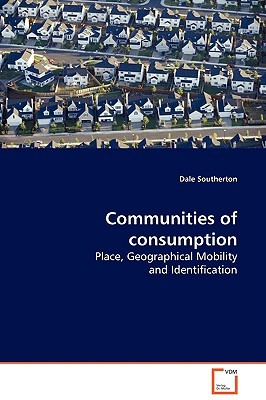
- We will send in 10–14 business days.
- Author: Dale Southerton
- Publisher: VDM Verlag
- ISBN-10: 3639131517
- ISBN-13: 9783639131512
- Format: 15.2 x 22.9 x 1.5 cm, softcover
- Language: English
- SAVE -10% with code: EXTRA
Reviews
Description
This book examines the role of consumption in mediating social relations and processes of identification. It presents a critique of theories that suggest symbolic consumption has become the critical feature of identity formation in late- modern societies. The social relations within a UK New Town are shown to be framed by economic, cultural and social resources which shape consumption orientations. However, these relations are not static. The town represents a local social world in which differentiation is articulated through degrees of belonging to different taste communities. Conspicuous forms of consumption become less important as markers of belonging and distinction depending upon the length of membership within such communities. Those established within taste communities identified with other residents based on shared tacit understandings of moral and cultural categories of distinction, rather than having to rely on aesthetic dimensions of consumption to achieve a sense of belonging. This book demonstrates the significance of local-level interactions and socio-structural constraints on consumption orientations and identity-formation.
EXTRA 10 % discount with code: EXTRA
The promotion ends in 17d.08:35:57
The discount code is valid when purchasing from 10 €. Discounts do not stack.
- Author: Dale Southerton
- Publisher: VDM Verlag
- ISBN-10: 3639131517
- ISBN-13: 9783639131512
- Format: 15.2 x 22.9 x 1.5 cm, softcover
- Language: English English
This book examines the role of consumption in mediating social relations and processes of identification. It presents a critique of theories that suggest symbolic consumption has become the critical feature of identity formation in late- modern societies. The social relations within a UK New Town are shown to be framed by economic, cultural and social resources which shape consumption orientations. However, these relations are not static. The town represents a local social world in which differentiation is articulated through degrees of belonging to different taste communities. Conspicuous forms of consumption become less important as markers of belonging and distinction depending upon the length of membership within such communities. Those established within taste communities identified with other residents based on shared tacit understandings of moral and cultural categories of distinction, rather than having to rely on aesthetic dimensions of consumption to achieve a sense of belonging. This book demonstrates the significance of local-level interactions and socio-structural constraints on consumption orientations and identity-formation.


Reviews